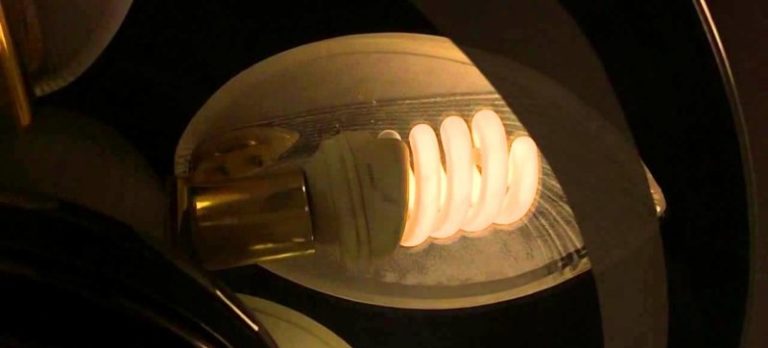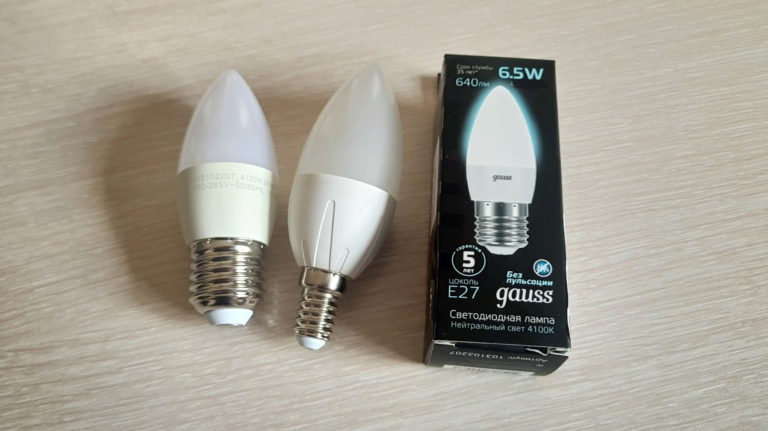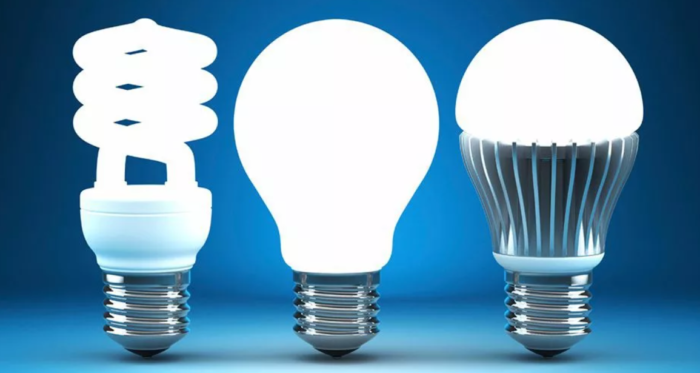Which is better - LED or energy saving bulb
Ordinary incandescent bulbs have long lost popularity as strong competitors have entered the market. The only thing that saves them is the low cost. Most people prefer to buy energy-saving or LED bulbs, which are characterized by a long life and economy.
Engaging in the lighting of the house or apartment, you should study as much information as possible. Especially if the goal is reliability and economy. Not everyone understands what the main difference between LED bulbs and energy-saving, and whether there is one at all.
Description and characteristics of the bulbs
Sometimes in stores you can come across the abbreviation CLL. Its deciphering is "compact fluorescent lamps". Popularly, they are called energy-saving. Despite their popularity due to their cost-effectiveness, they are not without drawbacks:
- Loss of brightness over time.
- Service life is reduced when installed in a room with high humidity.
- Switching on with a delay (the starting system must first warm up the electrodes).
- Unstable to the low quality of the electricity supply (constant variations and surges in the network).
- Some products contain an ultraviolet spectrum of radiation, which is detrimental to vision.
Energy-saving bulbs are available with the following markings:
- L - fluorescent;
- B - white color;
- TB - warm-white;
- E - improved environmental performance;
- D - daylight;
- C - improved color rendering.
The color temperature should be chosen depending on the room and its purpose.
LED lamps also have their disadvantages, the main ones are:
- price;
- the directivity of light to a specific point;
- Not all light bulbs can not all bulbs can be replaced by LEDs because of their size;
- color rendering.
Despite the disadvantages, such products are 10 times more economical than incandescent bulbs. Depending on the manufacturer and price, they will last between 30,000 and 50,000 hours. But the characteristics will show themselves only in suitable operating conditions.
LED
LED light bulbs are also called LED bulbs. Their power is measured in watts. The luminous intensity and power consumption depend on the wattage. The luminous flux is measured in Lumens. This is one of the important indicators that you should pay attention to before buying.

The temperature of the light is measured in Kelvin. For example, if you need warm lighting, values between 2,700 and 3,300 K will do. Daylight and cool light require 4000-5000 K. There are different types socket, but the most common are E27 (large) and E14 (small).
Energy Saving
The power, luminous flux, and temperature characteristics of an energy-saving bulb are measured in the same terms as LED bulbs. Light output is a measure of a product's efficiency: how much light a particular source produces per 1 watt of energy consumed.

Inside the CFL are tungsten electrodes. They are covered with activating substances - a combination of calcium, strontium and barium oxides. A small amount of mercury vapor and inert gas is present in the bulb. When the electrodes are turned on, they begin to interact with each other, which takes 0.5 to 1.5 seconds.
Comparison of energy-saving and LED lamps
To determine which lamp is better: LED or energy-saving, it is not enough to read only their characteristics. It is important to pay attention to the operating conditions.
If the bulb will burn regularly, it is recommended choose LED, as it is often more economical than energy-saving.

When the question of environmental friendliness is raised, the LED lamp is also preferred because there are no harmful fumes inside it. It is worth considering that CFLs are not advisable to install along with a switch that regulates the intensity of light. It can either burn at full power or be off. This is due to gas ionization, which cannot be controlled.
Power consumption
Studies have shown that fluorescent (energy-saving) lamps are 20-30% more economical than conventional incandescent bulbs. LED, in turn, can be more economical than CFL by about 10-15%. It all depends on the power and brands.
The only advantage of energy-saving lamp in this case - it is the cost. LED will cost much more. But with proper operating conditions, it will last 2-3 times longer.
Environmental safety
CFLs contain approximately 5 ml of mercury, the amount varies depending on size. Mercury is hazardous to health and is in the highest hazard class. It is forbidden to throw away a light bulb with other garbage is prohibited, you must take it to a specialized collection point.
Infrared radiation that emanates from an energy-saving lamp is also harmful to humans. In order not to expose the body to risks, it is better to give preference to LEDs. That said, there is currently no direct evidence that a fluorescent bulb has caused a specific disease.
Operating temperature
The maximum incandescent bulb temperature reaches 60 degrees. It will not provoke a fire and is not capable of injuring human skin. But if there is a malfunction in the wiring, the temperature can rise significantly. The likelihood of such a situation occurring is extremely low, but the risk is still there.
LED bulbs practically do not heat up, especially quality products from popular brands. This is due to the semiconductor technology based on LED crystals. For most people, heating indicators are insignificant, because they do not need to touch the lamp when it works.
Lifetime
If the budget is not limited and you need to buy a light bulb with the longest lifespan, it is better to buy LED. But to justify the price, you should buy products from popular brands, which will be discussed below.

According to studies, LED light sources last 4-5 times longer than fluorescent. To check the information, it is sufficient to read the text on the packaging. An LED bulb, under proper operating conditions, lasts up to 50,000 hours, while an energy-saving bulb lasts about 10,000 hours.
Summary of comparisons (table)
| Type of bulb | Power saving | Lifetime | Safety and recycling | Case heating | Cost |
|---|---|---|---|---|---|
| LED | + | + | + | + | - |
| Energy Saving | - | - | - | - | + |
| Bottom line | 4:1 LED Bulb Winner |
The most popular manufacturers
To buy a reliable lamp, you should consider only products from popular brands that have earned the trust of consumers. Now on the market you can find many proposals from Chinese manufacturers, offering tempting prices. But such products are rarely reliable, often burn out ..
Manufacturers of LED lamps
Experts advise to give preference to the following brands:
- Philips.
- Osram.
- ASD.
- Jazzway.
- Gauss.
- Camelion.
- Feron.
They have proven to be the best in the market of LED lamps, as well as various home appliances. The highest rating from Osram and Philips.
Manufacturers of energy saving lamps
Manufacturers of high quality energy saving lamps:
- Navigator.
- Delux.
- Smartbuy.
- Foton.
- General Electric.
- ERA.
- Philips.
High ratings from buyers received brands Philips, General Electric, Navigator and Delux.
Recommended to watch video: Which lamp is the most economical and energy-saving.
Expert advices on the choice
It is difficult to say which bulbs will be better and more economical: LED or energy-saving. It all depends on the place where they will be installed, voltage fluctuations and other factors that will affect the service life and energy consumption.
Comparing, you can see that in almost all respects, LED lamps are superior to CFLs. But the cost is much higher, which is significant if you need to light a large house.
Often CFLs are purchased when the choice is between them and incandescent lamps. It is very difficult to compete with LED technology. It is also worth considering that "econo" will gradually begin to lose brightness, as the gas pressure inside the bulb will drop over time.





